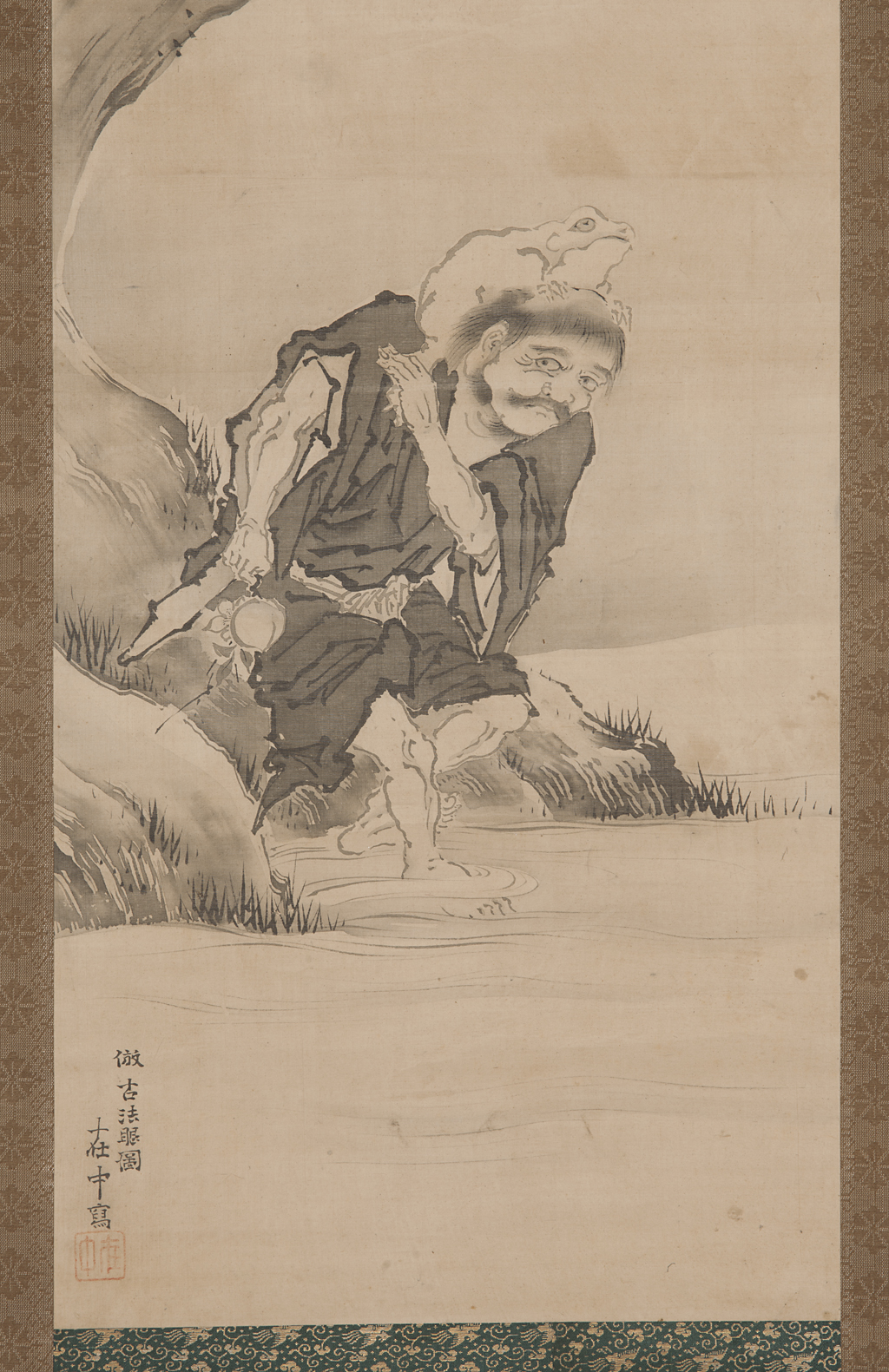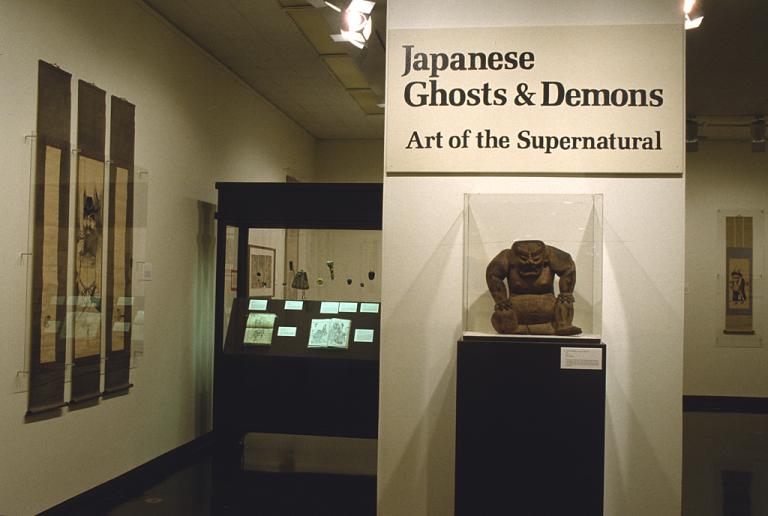Taoist Priest (Gama and Tekkai), Hara Zaichū
Artwork Overview
Hara Zaichū, artist
1750–1837
Taoist Priest (Gama and Tekkai),
late 1700s–early 1800s, Edo period (1600–1868)
Where object was made: Japan
Material/technique: ink; silk
Dimensions:
Image Dimensions Height/Width (Height x Width): 94 x 31.7 cm
Image Dimensions Height/Width (Height x Width): 37 x 12 1/2 in
Mount Dimensions (Height x Width x Depth): 68 x 17 in
Roller Dimensions (Width x Diameter): 18 1/4 x 1 in
Image Dimensions Height/Width (Height x Width): 94 x 31.7 cm
Image Dimensions Height/Width (Height x Width): 37 x 12 1/2 in
Mount Dimensions (Height x Width x Depth): 68 x 17 in
Roller Dimensions (Width x Diameter): 18 1/4 x 1 in
Credit line: Museum purchase
Accession number: 1970.0112
Not on display
If you wish to reproduce this image, please submit an image request








